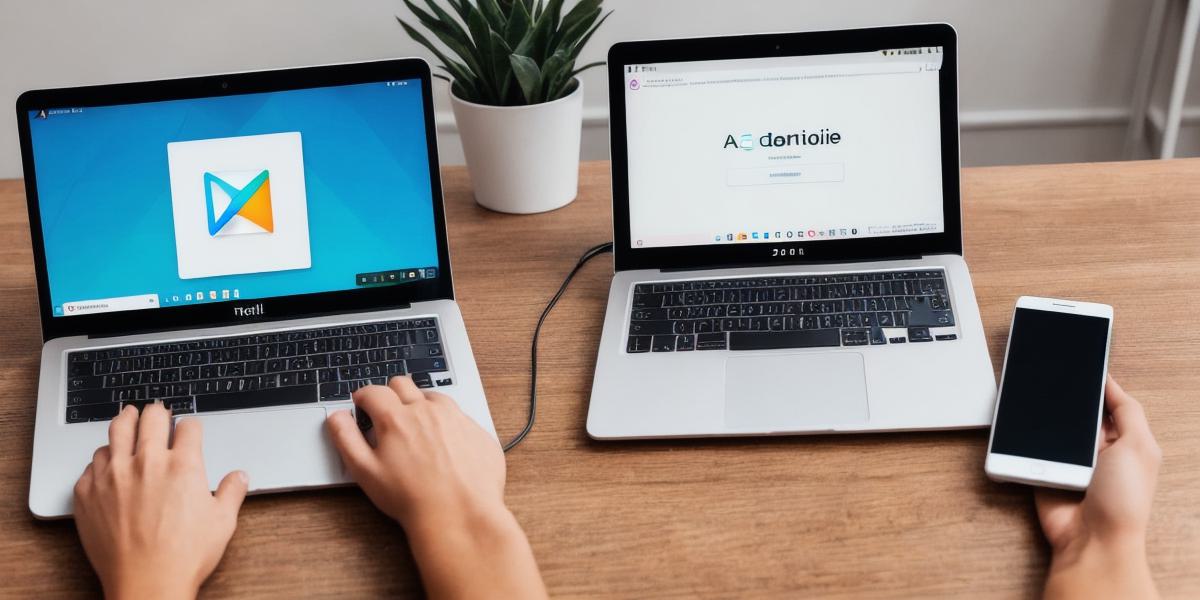Introduction
Developing Android apps is a daunting task, especially for beginners. With React Native, however, this process becomes much easier and more efficient. In this article, we will explore the basics of developing Android apps using React Native, as well as some of the benefits that come with this approach.
Getting Started with React Native
React Native is a popular open-source framework for building mobile applications across multiple platforms. It allows developers to write code once and deploy it on both iOS and Android devices, saving time and effort. To get started with React Native, you will need to install Node.js and the Expo CLI. Once installed, you can create a new project using the command:
<h2>expo init MyApp</h2>This will create a new folder called "MyApp" with all the necessary files for your project.
Developing Your App’s User Interface (UI)
React Native provides a number of built-in UI components that can be used to create an intuitive and engaging user interface for your app. These include buttons, text boxes, images, and more. Additionally, you can use third-party libraries like Material UI and Navigation Drawer to add additional functionality to your app.
<h2>import { View, Text } from 'react-native';</h2>
<h2>const App () > (</h2>
<h2> <View></h2>
<h2> <Text>Hello World!</Text></h2>
<h2> </View></h2>
);
<h2>export default App;</h2>Testing and Debugging Your App
Once your app is built and running on an Android device, you can test it using the Expo client or a physical device. To debug your app, you can use the React Native Debugger tool, which allows you to inspect variables and view logs in real-time. Additionally, you can use tools like Firebase Test Lab to automatically test your app on multiple devices and configurations.
<h2>const { StyleSheet } require('react-native');</h2>
<h2>export default function App() {</h2>
const [text, setText] useState('Hello World!');
return (
<View style{styles.container}>
<Text>{text}</Text>
<h2> <View></h2>
<TextInput value{text} onChangeText{setText} />
<h2> </View></h2>
<h2> </View></h2>
);
}Benefits of Using React Native for Android App Development
There are many benefits to using React Native for Android app development. First and foremost, it allows developers to write code once and deploy it on both iOS and Android devices, saving time and effort. Additionally, React Native provides a number of built-in libraries and tools that can be used to speed up the development process. This includes things like Redux for state management and Firebase for authentication and database storage. Finally, React Native has a large and active community of developers who constantly contribute new features and improvements to the framework.
<h2>import { StyleSheet } from 'react-native';</h2>
<h2>export default function App() {</h2>
const [text, setText] useState('Hello World!');
 return (
<View style{styles.container}>
<Text>{text}</Text>
<h2> <View></h2>
<TextInput value{text} onChangeText{setText} />
<h2> </View></h2>
<h2> </View></h2>
);
}
return (
<View style{styles.container}>
<Text>{text}</Text>
<h2> <View></h2>
<TextInput value{text} onChangeText{setText} />
<h2> </View></h2>
<h2> </View></h2>
);
}FAQs
Q: Can I use React Native to develop Android apps without knowledge of Java or Kotlin?
A: Yes, you can use React Native to develop Android apps without knowledge of Java or Kotlin. However, it is still important to have a basic understanding of app development concepts and principles.
Q: What tools do I need to get started with React Native?
A: You will need Node.js and the Expo CLI to get started with React Native. Additionally, you may want to install third-party libraries like Material UI and Navigation Drawer for additional functionality.
Conclusion
Developing Android apps with React Native is a great way to save time and effort while still creating high-quality, engaging apps.
